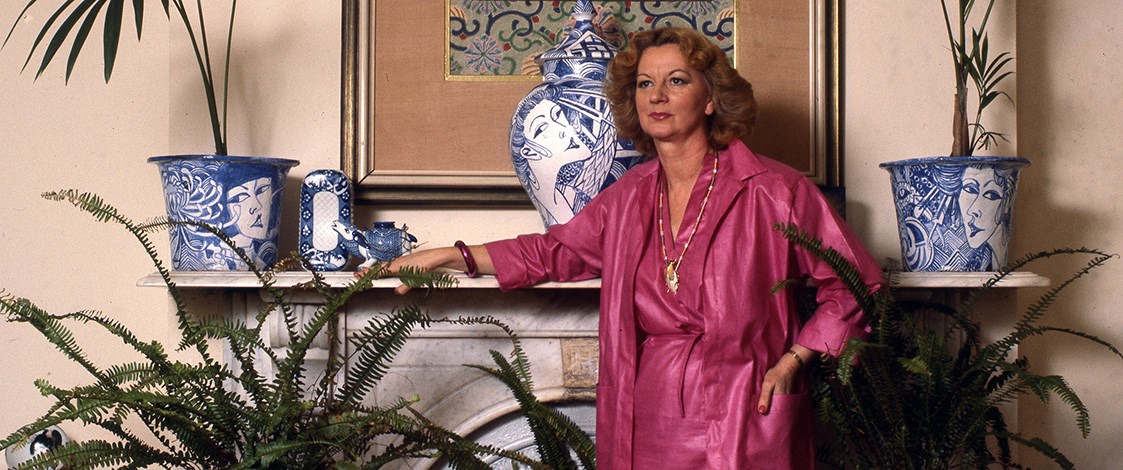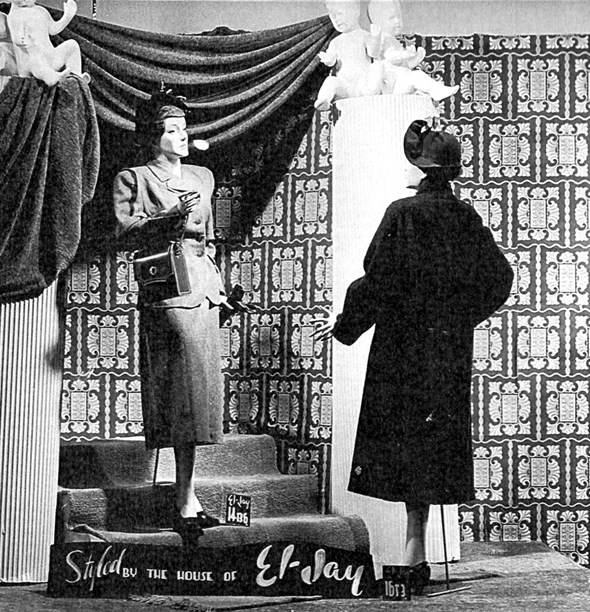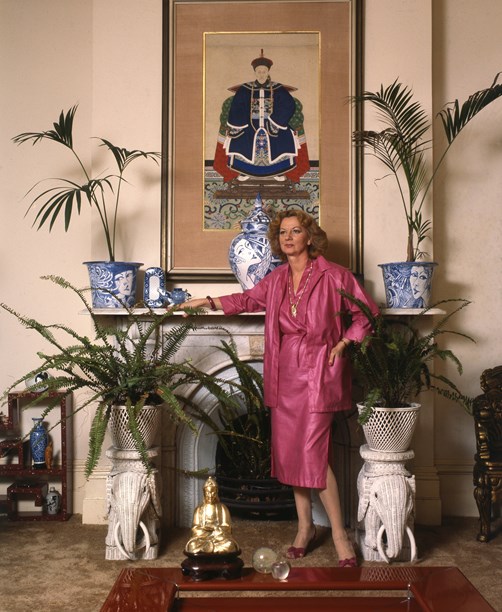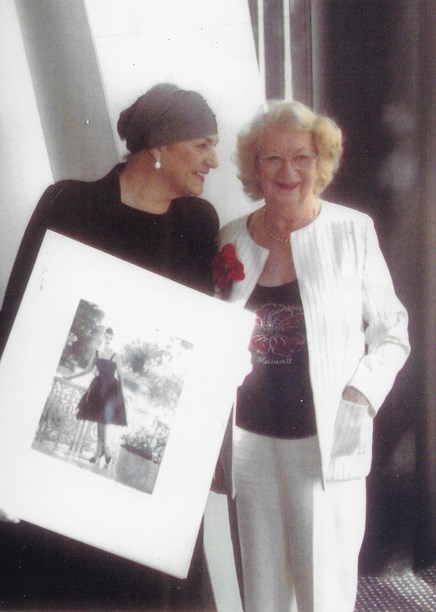Stories
Hazel Benini
1930-

From dressing windows in a Dunedin department store to marriage and a 40-year working partnership with one of Australia’s top mid-20th century fashion photographers, Hazel Benini’s career reads like a fairy tale.
Born Hazel Craig in Dunedin in 1930, she admits to an interest in fashion and art from an early age. She did her secondary schooling at the Otago School of Art, founded in 1870 and incorporated into the King Edward Technical College in 1921. Here, in addition to the core subjects such as English and mathematics, students were schooled in life drawing, sculpture, portrait painting, ticket-writing and design. After leaving college, Hazel continued her art studies at night school.
Reminiscing about her Dunedin days, Hazel says the art of shop window display was not part of the school curriculum but that she picked it up when she went to work as a ticket-writer in the display department at Dunedin department store the DIC. "Every Christmas, the DIC set up a Magic Cave in the basement, complete with elves and fairies, where the children went to see Santa. My arrival coincided with the Christmas preparations and I was set to work making Bambis with nodding heads, Thumper Rabbit and other animals I copied from a Walt Disney book."
Three years later, Hazel was appointed display manager at Brown Ewing & Co, a department store in the Exchange. Home to the Chief Post Office and the central point for tram and cable-car arrivals and departures, the area was once Dunedin’s hub. Hazel travelled daily to and from work on a No 6 tram.

Portrait of Hazel Craig (later Benini) by Franz Barta, Dunedin, 1950. Image © Hazel Benini.
"Considering I was just 20 and all the Brown Ewing buyers and management were pretty old," she says, "I got on surprisingly well. Although they didn’t like me to be too trendy, they gave me a free hand."
Her first big fashion window was a bridal display - 'The Bride Looked Lovely' - featuring the bride, a bridesmaid and the mother-of-the bride. Choir boys, arched church windows and guests in pews, hand-painted by Hazel and cut out of Swedish board, formed the back-drop. For another wedding window, she crafted trees out of tubes from lunch-wrap rolls, painted them purple and hung small beribboned bouquets in the branches. The idea came from the Walt Disney movie Fantasia.

Section of bridal window, Brown Ewing & Co, Dunedin 1949.
The 'Greet the Spring' fashion windows - announcing the arrival of everything from Horrockses cotton dresses, hats and handbags to beautifully embellished lingerie and sleepwear - were an annual highlight. To capture the mood of the season, Hazel made trees, blossoms and flowers and, for a display of softly draped dresses and picture hats, she devised a pump-operated waterfall that flowed into a pool.

Lingerie Spring window, Brown Ewing & Co, Dunedin 1951.
The monthly American trade magazine Display World, to which the store subscribed, provided Hazel with many of her ideas. She remembers being impressed by a photograph of a window in the New York department store Lord & Taylor. "It showed elegantly clad women arriving at the opera and I did something similar. I dressed the mannequins in strapless, full-skirted evening gowns, tulle wraps and fur stoles and posed them on the floor and in specially constructed opera boxes, peering down. Not exactly New York standard but not bad for Dunedin!"
She says that despite having a limited budget, she always tried to make the displays look glamorous and to create the appropriate setting. For 'Frocks to Dream About' - a formal eveningwear window - she suspended the mannequins in the air and caught the hems of their dresses out with nylon thread to give the impression they were floating. White clouds spray-painted on the window glass further enhanced the dream-like effect.
There were five major department stores in Dunedin in the early 1950s and competition was keen to produce the best windows. Hazel enjoyed a friendly rivalry with a fellow window-dresser at A & T Inglis. "We would check out each other’s windows to see what the other was doing."

El Jay window, Brown Ewing & Co, Dunedin 1950.
Influenced by Hollywood, Hazel designed and made most of her own clothes. The creativity of movie costume designers such as Adrian and Edith Head appealed to her artistic tastes more than the stereotypical fashions offered up by women’s magazines. Describing Dunedin as “rather staid”, she says her individuality was not always appreciated and she got used to being stared at on the street. Not that it bothered her. She liked being different. She recalls one occasion when she was flying to Auckland, wearing an El Jay black and white hounds-tooth cape and black pencil skirt and carrying a red walking-length umbrella. "I walked across the tarmac, paused dramatically on the steps to the plane and waved to my friends – just like they did in the movies!" Another remembered El Jay favourite, a belted moss green coat, had a Hollywood-style leopard-skin collar.

Hazel Craig (later Benini) wearing a white gabardine suit with a shawl collar and a black hat with an eye veil. She is carrying an Arctic fur rolled into a muff. Dunedin 1950.
With her naturally curly dark hair, centre part, and arched eyebrows, Hazel bore a passing resemblance to one of her screen idols Hedy Lamarr but, unlike the famous star, she never wore much makeup. "Dark red lipstick and a slick of Vaseline on the eyelids, that was it."
From Brown Ewing & Co, Hazel moved to Auckland, working as a display artist at Rendells department store on Karangahape Road before returning to Dunedin to open her own millinery salon The Gold Room on Dowling Street. A self-taught milliner, she specialised in the design of hand-made model hats and bridal headwear, primarily coronets and tiaras fashioned from pearls. Decorated with gilded furniture and mirrors, chandeliers and gold and cream Regency-striped settees, The Gold Room lived up to its name.
In 1958, aged 28 and in search of new career opportunities, Hazel Craig followed friends to Melbourne. After working for a time as a display artist at Portmans, she was put in charge of the fashion windows at Hicks Atkinson, a large department store on Collins Street. In 1962, the same year Sportsgirl approached her to take over their windows and later their advertising, she married Bruno Benini, a Melbourne fashion photographer whose work rated alongside that of Helmut Newton, Athol Shmith and Henry Talbot, all of whom he worked with early in his career.
The Beninis formed a collaborative working partnership, with Hazel scouting locations, theming shoots, sourcing props for her husband’s assignments and working alongside him in his studio. Additionally, after leaving Sportsgirl, she operated independently as a fashion publicist, display artist and marketing consultant, numbering many of Australia’s leading fashion designers, manufacturers, retailers and fashion editors among her clients. She mentions, with some pride, that she was the first in Melbourne to introduce large blow-ups of fashion photographs (notably those of her husband) into store interiors and shop window displays.

Hazel Benini wearing a pink polished cotton dress and jacket purchased in Paris. Melbourne 1979.
In 1999, two years before his death, Bruno Benini began organising and cataloguing his extensive archive. It comprised 200 large format photographic prints, several thousand negatives and transparencies, and original proof-sheets and contact prints. In 2009, with the help of the Commonwealth Government through the National Cultural Heritage Account, Sydney’s Powerhouse Museum acquired the archive from Hazel. The following year, the museum mounted a major exhibition Creating The Look: Benini And Fashion Photography which ran from July 2010 to February 2011.

Hazel Benini with former model and Australian fashion personality Maggie Tabberer holding a photograph of herself taken by Bruno Benini in 1958. Powerhouse Museum, Sydney 2009.
In her catalogue essay for the exhibition, Anne-Marie Van de Ven, curator at the Powerhouse Museum wrote: 'Bruno was the suave, charming photographer and Hazel the vivacious, energetic fashion stylist and publicist. Their different talents – his technical virtuosity and innate elegance, her fashion flair and inventiveness - combined to produce a remarkable body of fashion photography spanning five decades.'
Now in her 86th year, Hazel Benini resides in Melbourne and still takes a keen interest in fashion.
Text by Cecilie Geary.
Last published September 2016.